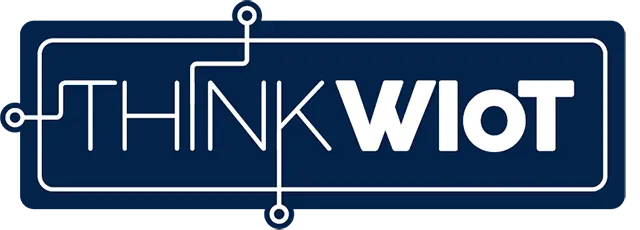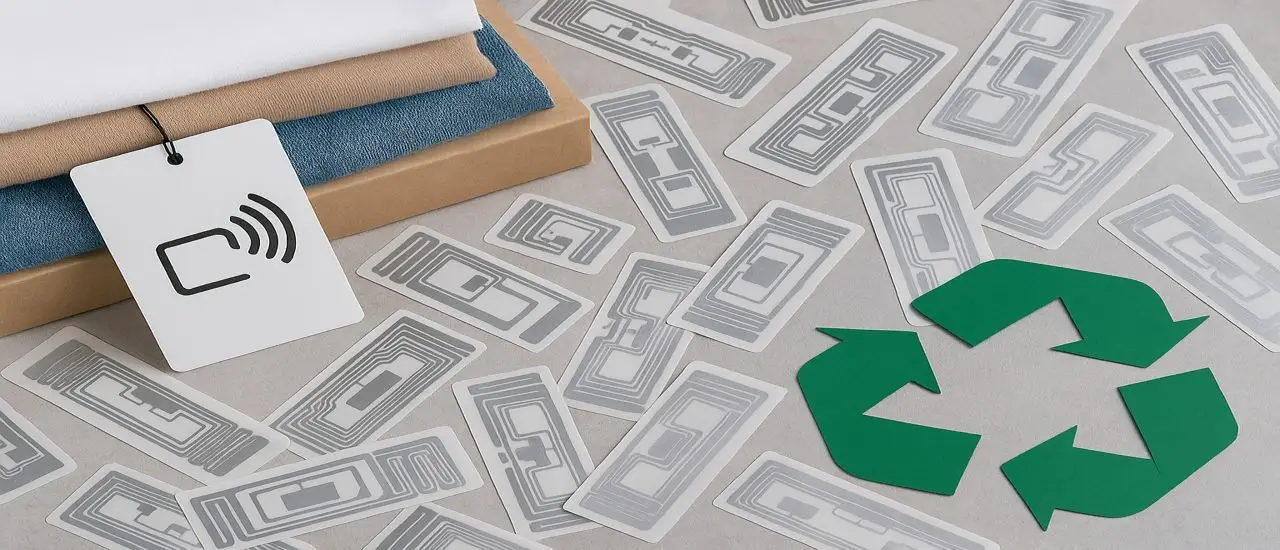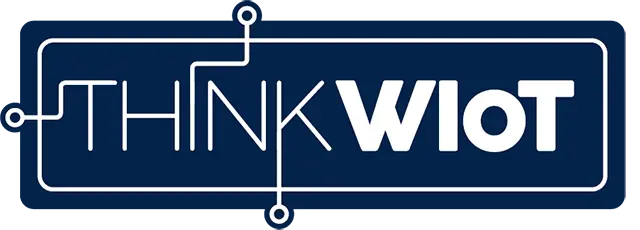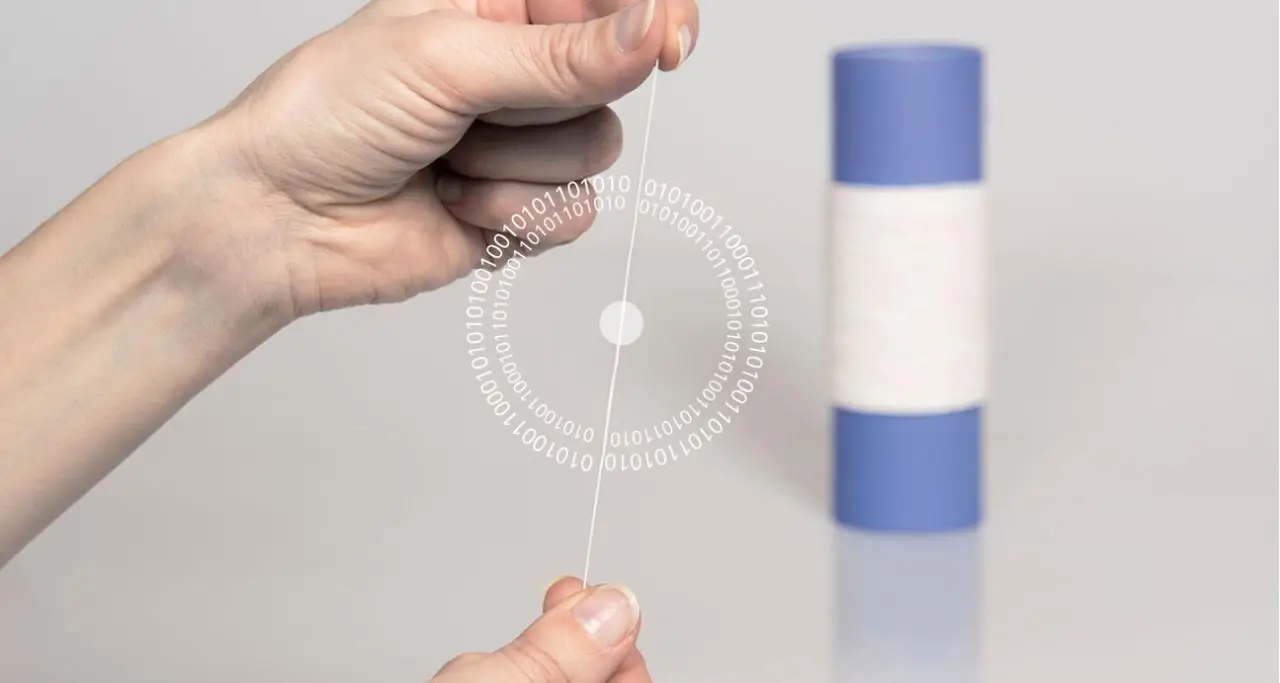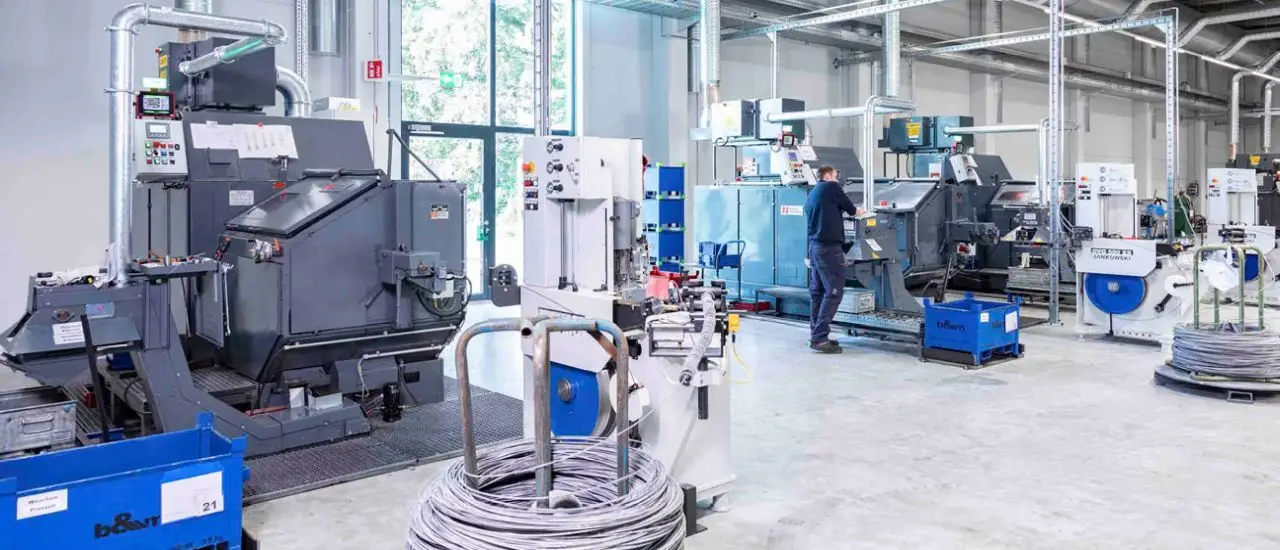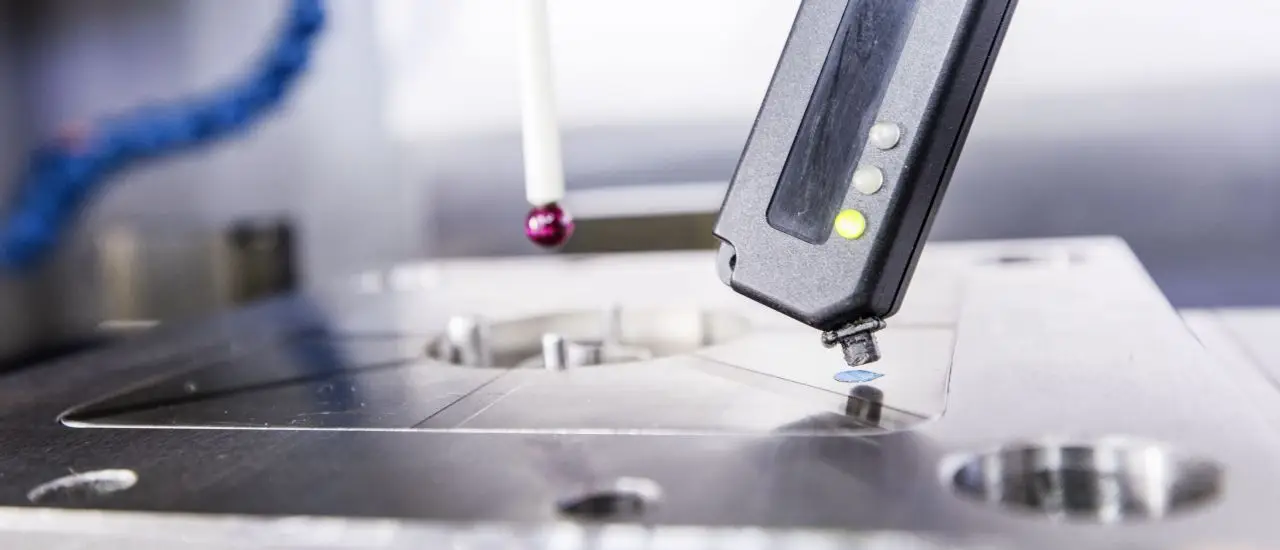- Passive RAIN UHF RFID delivers low-energy, real-time inventory tracking and enables automated checkout and supply-chain efficiencies.
- Conventional RFID labels complicate recycling because mixed materials and tiny chips are difficult and uneconomic to separate and recover.
- The Digital Product Passport (from 2027, Regulation (EU) 2024/178) will increase RFID demand while imposing transparency and sustainability requirements.
- ISO 59040 and the Product Circularity Data Sheet (PCDS) provide a standardized framework to measure and verify product and tag circularity.
- Paper-based, ISO-compliant inlays such as Joaneo’s can achieve 75–95% recyclability and demonstrate recoverable conductive materials, showing design-for-circularity is feasible.
The retail sector is increasingly relying on RAIN UHF RFID to make processes more efficient and transparent. Clothing, consumer goods, and food are tagged with RFID labels that monitor inventory in real time, optimize supply chains, and enable automated checkout processes.
This technology is a key component of the digital transformation of retail, especially with regard to the upcoming Digital Product Passport (DPP), which will take product traceability to a new level.
While the advantages in the areas of logistics and data management are undisputed, one aspect is increasingly coming into focus: the sustainability of physical RFID labels. Billions of these tags enter circulation every year, without sufficient consideration being given to their whereabouts after use.
Passive RFID tags: Efficient, low-energy, and resource-saving
Passive RFID tags are fundamentally energy-efficient from an ecological perspective. Since they do not require their own battery, they are activated exclusively by the energy of the reader. This makes them significantly more resource-efficient than active tags with batteries and avoids additional battery waste.
RFID labels are a special form of these RFID tags, which are used in large quantities, especially in the retail sector. They consist of several components: the inlay – i.e., the actual RFID unit with a silicon chip and metal antenna –, a carrier material made of paper or plastic, adhesives, and, if necessary, a printed top layer for visual identification.
Formally, they therefore fall into the category of electrical equipment and are theoretically considered electronic waste. In practice, however, they are usually disposed of together with packaging, as separate collection and recycling is currently not economically feasible due to their tiny size.
With the expected massive growth in numbers due to the DPP, this gray area could become an environmental and recycling issue. This is precisely why the question of design for recycling and circular concepts is becoming increasingly important.
The challenge: material diversity and recyclability
A classic RFID inlay is technically sophisticated, but complex from a recycling perspective:
Paper recycling is impaired by metal and plastic residues.
Plastic streams are difficult to separate when metal and chip residues are integrated.
The tiny chips themselves cannot yet be recovered economically.
As long as there are no optimized designs, many inlays end up in residual waste or are treated as contaminants in recycling processes. This contradiction becomes particularly apparent when RFID is seen as a contribution to sustainability, for example, by reducing overproduction or making goods flows more efficient, but the physical tag component itself is not yet recyclable.
Digital Product Passport: Sustainability becomes mandatory
From 2027, the Digital Product Passport (DPP) will gradually become mandatory for numerous product categories. The legal basis for this is Regulation (EU) 2024/178, which was developed as part of the Ecodesign for Sustainable Products Regulation (ESPR).
The DPP is intended to make the entire life cycle of a product transparent. This includes, among other things:
Material composition and substances contained,
Recycling and repair information,
CO₂ balance and ecological indicators,
Data on origin and supply chain.
RFID tags play a key role here, as they enable contactless, unique identification – from production to recycling.
However, this creates new requirements: a tag that stores recycling information must not itself become a recycling problem. This requirement is driving the industry to focus more on design for recycling and design for circularity.
ISO 59040: Standard for circular economy and transparency
The new international standard ISO 59040 provides a framework for making circularity measurable and verifiable. It defines the Product Circularity Data Sheet (PCDS), a standardized document that contains all relevant information on material use, recyclability, and the life cycle of a product.
This is the first time that a tool has been created that combines technological innovation and sustainability. For RFID, this means that tags can not only serve as identification tools, but can also become part of a sustainable circular economy themselves – provided that they are designed to be recyclable.
Example: Joaneo – recyclable RFID inlays made of paper
The Luxembourg-based company Joaneo shows how RFID inlays can actively contribute to the circular economy. Joaneo relies on paper-based inlays that have been optimized from the ground up for recycling processes. In collaboration with the organization Terra Matters, a comprehensive analysis was carried out in accordance with ISO 59040.
The result: the first globally published PCDS for an RFID inlay.
Key findings of the analysis:
75–95% of the materials can be recycled at the end of their life cycle without any loss of quality.
The silver particles in the conductive printing ink can be completely recovered and reused.
The paper base comes from PEFC-certified forests and can be easily processed in existing paper recycling systems.
Local sourcing and the use of regional green electricity further reduce the carbon footprint.
Joaneo thus demonstrates that RFID does not necessarily have to be a disposable product with no second chance. Instead, it can be actively integrated into the cycle if sustainability is taken into account in the design process.
Market development: Sustainability becomes a competitive factor
With the introduction of the DPP, demand for RFID solutions is likely to skyrocket. For manufacturers of RFID chips and inlays, this means enormous growth potential on the one hand, but also growing responsibility on the other.
The market is already evolving:
Several companies are working on new materials such as biodegradable carriers and conductive inks.
Initial pilot projects are focusing on chip-less RFID technologies that can be recycled like paper.
More and more suppliers are publishing sustainability reports and addressing the entire value chain.
This change shows that the industry recognizes the issue and is developing solutions to make RFID environmentally sustainable in the long term.
Comparison: Classic vs. sustainable RFID inlays
Aspect | Traditional RFID inlays | Joaneo RFID inlays (paper-based, ISO 59040) |
|---|---|---|
Material base | Plastic or composite materials | Paper (PEFC certified) |
Antenna | Aluminum/copper | Silver conductive paste, recoverable |
Recyclability | < 10% recyclable, the rest is waste | 75–95% recyclable |
Carbon | Dependent on global supply chains | Local production with green electricity |
Proof of circularity | Not standardized, risk of greenwashing | ISO 59040-compliant PCDS available |
Digital Product Passport | Technically possible, but not physically sustainable | Optimal carrier for DPP |
Conclusion: From efficiency driver to circular economy partner
RFID is a key technology for modern retail and the Digital Product Passport. Passive RFID tags are already an energy-efficient and resource-saving solution, as they do not require batteries. However, as they become more widespread, the challenge arises of making their physical design as sustainable as their digital functions.
The industry is at a turning point:
Recyclable designs,
transparency through ISO 59040,
and regulatory requirements through the DPP will make the difference between short-term success and long-term acceptance in the future.
Joaneo has shown that circularity is possible with RFID. Now it is up to the entire industry to join forces and follow this path—so that RFID not only optimizes processes, but also actively contributes to the circular economy and enables a sustainable future for commerce.
